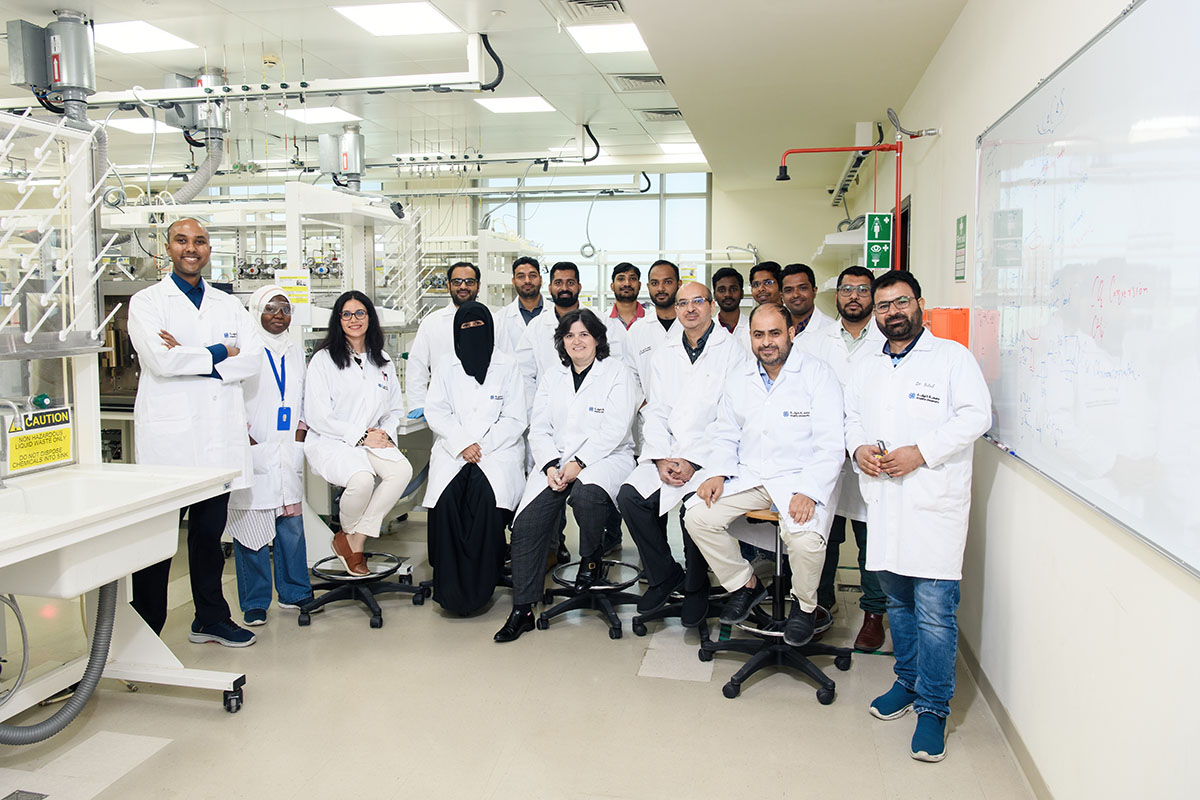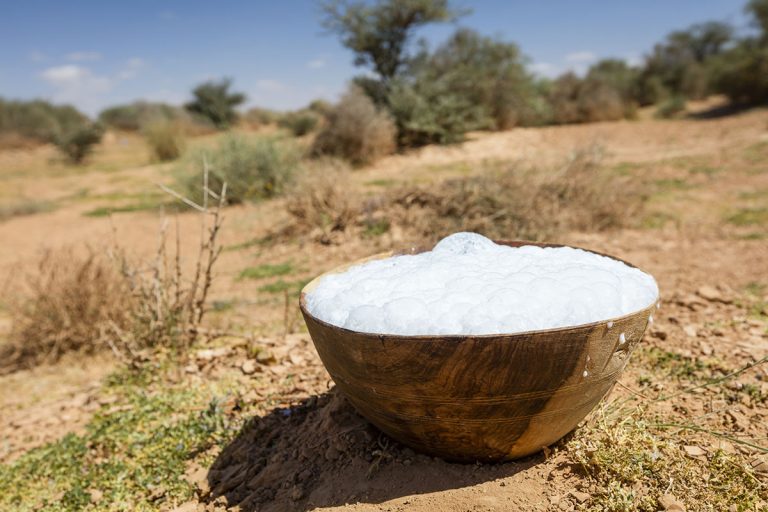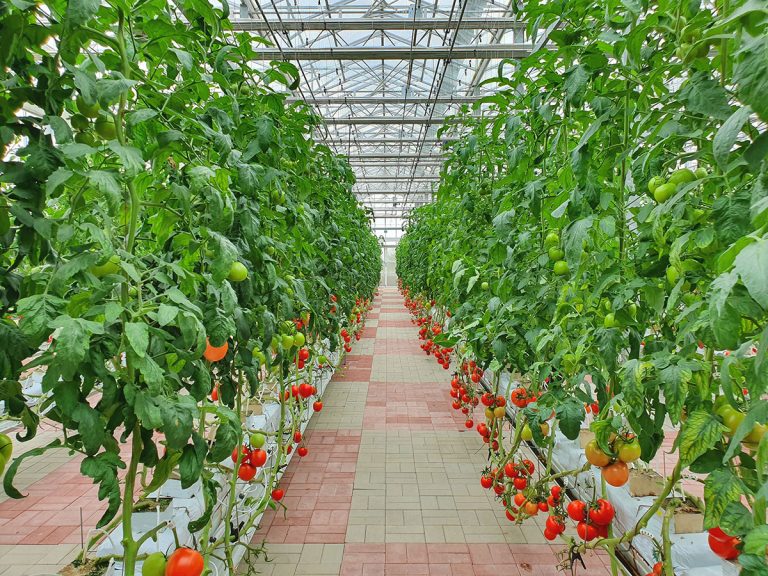Catalyzing the future
Cutting-edge research in reaction and separation technologies promises a cleaner and more sustainable world.
Making groundbreaking strides in energy and environmental science since its establishment in 2018, Khalifa University’s Centre of Catalysis and Separation (CeCaS) is the first of its kind in the United Arab Emirates. The center operates under a clear mission: to be a global leader in the development of catalytic technologies and emerging materials to provide innovative solutions that promise a sustainable future.
“Our vision is to lead in emerging materials for catalysis and separation technologies, a market worth trillions of US dollars,” explains Kyriaki Polychronopoulou, the director of CeCaS and a professor of mechanical engineering. “This aligns with our mandate to produce new technologies and support market expansion in the UAE’s research and technology ecosystem.”
Innovating separation technologies
CeCaS specializes in six research themes, each led by experts dedicated to advancing critical areas: fuels; energy-demanding separations; environmental and biocatalytic processes; multiscale materials modeling; accelerated discovery of new catalytic materials; and surface functionality in catalysis and separation.
Ahsan Qurashi, Deputy Director of CeCaS, has made notable contributions in clean energy systems. His research group focuses on developing new materials and approaches for electrocatalysis.
“Our vision is to lead in emerging materials for catalysis and separation technologies, a market worth trillions of US dollars. This aligns with our mandate to produce new technologies and support market expansion in the UAE’s research and technology ecosystem.”
Kyriaki Polychronopoulou
“We’ve demonstrated nickel and copper single-atom catalysts for the oxygen evolution reaction and characterized them using synchrotron radiation. We’ve also filed a patent for a novel support for ammonia synthesis using atmospheric nitrogen,” Qurashi says. This innovative approach achieved impressive efficiency.
Another group focuses on fuels and developing catalytic materials for producing blue ammonia and blue hydrogen, which are cleaner forms of these chemicals produced with reduced carbon emissions. In particular, Dinesh Shetty and colleagues have improved the performance of a process that converts glucose and nitrate into ammonia using a special catalyst made from a covalent organic framework.
One other active project involves breaking down methane into blue hydrogen using nickel metal supported on mesoporous desert sand silica. “We intend to convert the UAE’s desert sand into innovative materials, such as mesoporous silica,” says Khalid Al-Ali, who leads the project with Chin Kui Cheng. “So far, our results have shown that the material we synthesized can enhance hydrogen production from methane by at least two to three-fold. We also obtained carbon nanotubes from the same reaction,” Al-Ali adds.
Advanced materials to tackle pollution
Maguy Abi Jaoude, environmental and biocatalysis lead, is tackling global pollution issues with advanced materials. Her team explores light-driven catalysis to make environmental cleanup of air and water more sustainable and effective. For example, they are developing innovative integrated solutions including freestanding photocatalytic membranes to remove toxic pollutants from water, which target forever chemicals that do not break down in the environment. These include antibiotics, microplastics and perfluoroalkyl-and polyfluoroalkyl substances (PFAS) and synthetic chemicals with water-repellent and non-stick properties.
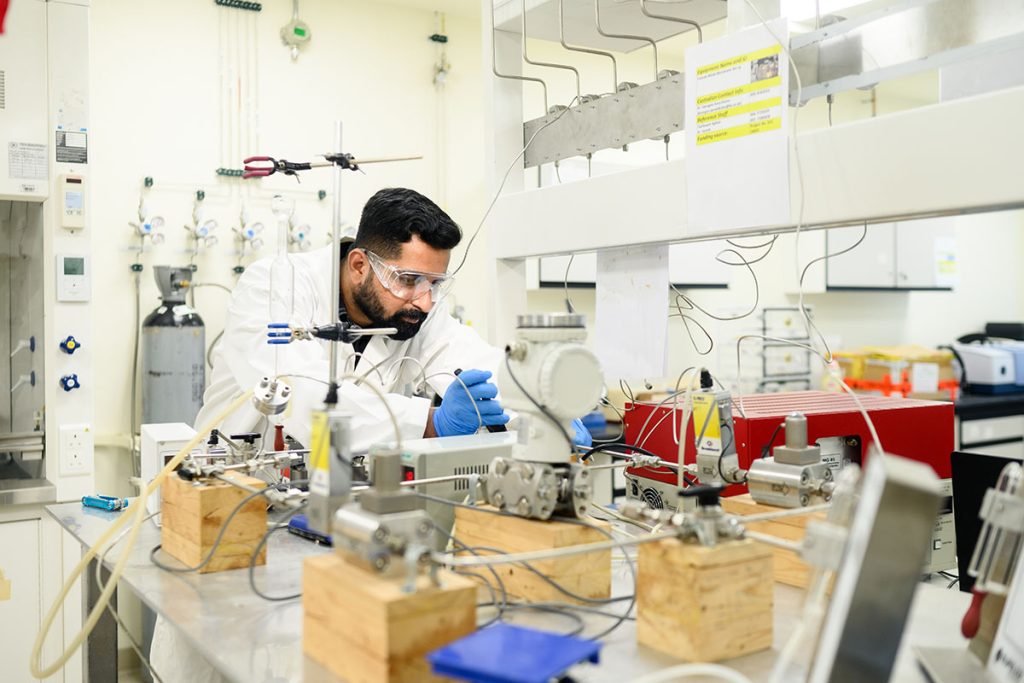
“In air pollution treatment, one challenge is the high energy demand of thermal catalysis, which is not sustainable. Light-driven catalysis is not fully understood and hasn’t reached commercialization due to performance issues,” Jaoude notes. The scientists explore ways of using light and heat to reduce energy costs and intensify technologies. Their goal is to understand and improve these processes to make catalysis more sustainable and effective in cleaning polluted environments.
Nahla Al Amoodi, separation technologies lead, works on developing hybrid materials and membranes for the separation of gas and liquid systems, such as carbon capture, olefin/paraffin separations, and multiphase liquid separations.
“We intend to convert the UAE’s desert sand into innovative materials, such as mesoporous silica. So far, our results have shown that the material we synthesized can enhance hydrogen production from methane by at least two to three-fold.”
Khalid Al-Ali
“We focus on gas and liquid separations. For gas separation, we work on decarbonization and carbon capture using hybrid adsorbents based on metal-organic frameworks, 3D printed adsorbents, and upcycling waste materials. We also develop mixed-matrix membranes functionalized with nanomaterials for paraffin/olefin separation,” Al Amoodi explains. For liquid separation, her team focuses on microfluidic platforms to perform passive phase separation by manipulating the surface chemistry of the channels.
CeCaS is also developing advanced synthesis and characterization techniques for various applications. These include the synthesis of porous catalytic materials for capturing carbon dioxide from the atmosphere and the development of new polymers for removing pollutants from wastewater. “We have assembled an interdisciplinary team of researchers who are using traditional materials chemistry techniques to synthesize new materials that can be used as catalysts but also for other applications such as in chemical or biological sensing,” says Sharmarke Mohamed, who leads the accelerated discovery of new catalytic materials theme.
A regional impact
CeCaS has made significant contributions to the UAE’s ecosystem and economy. The center has collaborated with industrial partners to scale up catalytic materials, such as a catalyst for CO₂ conversion to methane, which is currently being tested by a French company. Additionally, CeCaS has been instrumental in training PhD students and other skilled researchers, generating publications, patents, and startups.
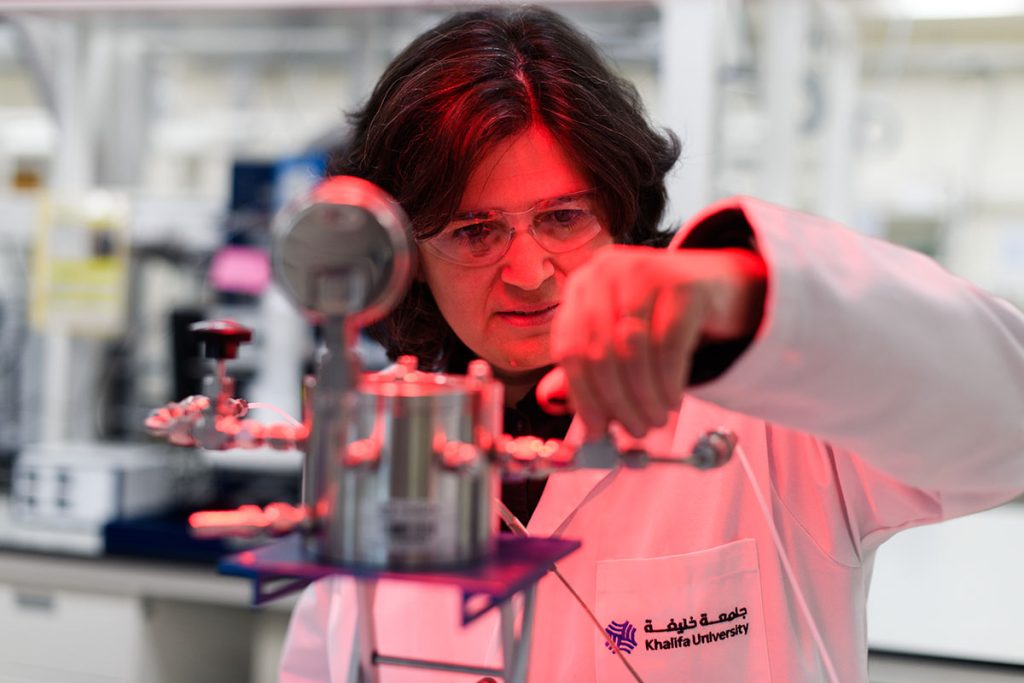
The UAE faces unique challenges in the energy sector, particularly with its reliance on petrochemical industries and the need for sustainable practices. Abdallah Berrouk, multiscale and data-driven modelling lead at CeCas, has been addressing these challenges by developing computational frameworks that minimize the necessity for extensive physical testing. His work significantly enhances material characterization and process scaling, benefiting existing production protocols and aligning with the strategic goals of key regional initiatives.
Berrouk’s research is crucial for the Abu Dhabi National Oil Company (ADNOC) carbon capture program, an ambitious plan to increase carbon capture and utilization fivefold by 2030. “By enhancing the predictivity of catalyst performance through a combination of multiscale modelling and machine learning, my research aids in the efficient deployment of catalytic processes vital to ADNOC’s oil and gas operations,” he explains.
“Our impact can be measured at different levels: the KU ecosystem, the Abu Dhabi economy, and the country, particularly through our recent efforts in research translation and entrepreneurship.”
Kyriaki Polychronopoulou
Mohammad Abu Haija, surface functionality in catalysis and separation theme leader, focuses on designing and developing functional materials with specific characteristics and investigating their structural, electronic, and chemical properties. These materials show great potential in various applications such as optoelectronic devices, clean energy, and environmental challenges.
“The development of advanced catalytic materials to achieve desired properties and functionalities with high performance requires a fundamental understanding of their surface and structural properties. Our research is centered around controlling the synthesis and understanding the surface chemistry of catalytic materials,” Abu Haija explains.
While it’s still early to measure national economic impact, CeCas has already made progress in many aspects, Polychronopoulou adds. “Our impact can be measured at different levels: the KU ecosystem, the Abu Dhabi economy, and the country, particularly through our recent efforts in research translation and entrepreneurship.”
A hub for talent and innovation
CeCaS has established itself as a thriving hub for talent and innovation, attracting researchers and students from diverse backgrounds who are eager to tackle complex challenges in catalysis and separation processes involving intriguing materials innovation. The Center’s commitment to interdisciplinary research and cutting-edge technology has created an environment where young scientists and engineers can thrive.
Ismail Salim, a PhD student working under Abdallah Berrouk’s supervision, explained that he joined CeCaS because of its strong focus on catalysis and separation reactions. His research focuses on building a robust machine learning framework and understanding the intricacies of Dry Methane Reforming reaction data. “With significant support from colleagues, especially in data preparation and experimental setups, I have gained invaluable hands-on experience with experimental devices and characterization techniques,” says Salim.
Similarly, Kedar Jivrakh, another PhD student at CeCaS, was attracted to the Center by its innovative project on carbon capture and conversion using 3D-printed structured catalysts. Jivrakh says, “Through exposure to modern 3D printing and material testing equipment, and training on these setups, I have polished my research skills, preparing me for future career growth.”
“CeCaS fosters a collaborative environment that motivates and nurtures student talent from undergraduate to PhD levels,” adds Jaoude. “Students independently collaborate, sharing ideas and generating innovative solutions. This synergy is evident in their output, such as manuscripts, poster presentations, and conference participation.”

